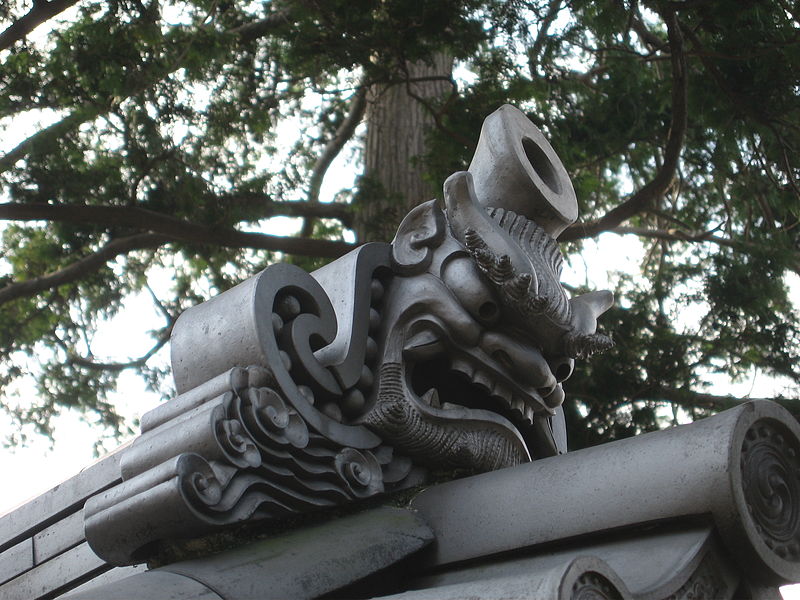 The college year in Japan starts in October, so in the fall of 1999 I had an extra month of summer vacation. It was going to be tough committing to a year in such a different place, while navigating a long-distance relationship with my boyfriend in Toronto, but life is for adventure. I arrived at Kansai International Airport in the last week of September, planning to take a week’s diversion to catch up with my friend Ian, who had taken a job teaching English in a small town in Fukushima Prefecture, roughly 75 miles (120 km) North-East of Tokyo. After that, I would head down to my new home in Ohbaku – a suburb of Kyoto – for my stint as a foreign student at Kyoto University, or Kyodai, as it’s known locally.
The college year in Japan starts in October, so in the fall of 1999 I had an extra month of summer vacation. It was going to be tough committing to a year in such a different place, while navigating a long-distance relationship with my boyfriend in Toronto, but life is for adventure. I arrived at Kansai International Airport in the last week of September, planning to take a week’s diversion to catch up with my friend Ian, who had taken a job teaching English in a small town in Fukushima Prefecture, roughly 75 miles (120 km) North-East of Tokyo. After that, I would head down to my new home in Ohbaku – a suburb of Kyoto – for my stint as a foreign student at Kyoto University, or Kyodai, as it’s known locally.
I was impressed that the local school had provided Ian and his girlfriend an entire house, with traditional tatami floors and sliding paper doors. It seemed like such a grown-up way to live, especially after our previous haunt at the university residence back in Canada. I happily settled in for the first night in my new country.
The next morning, 30 miles (50km) away, Hisashi Ouchi, Masato Shinohara and Yutaka Yokokawa were preparing a small batch of uranium dioxide fuel for a nuclear reactor, and they were under considerable time pressure. They opted for 10-litre stainless steel buckets rather than a dissolving tank, and then they poured their mixture, including about 16 kg of enriched uranium, directly into a precipitation tank, rather than the buffer tank designed to preclude the onset of criticality. Midway through pouring the seventh bucket, Cherenkov radiation flashed a brilliant blue, illuminating the workers, one leaning over the edge of the tank, another holding a pouring filter.
It was raining a little, but I still hadn’t seen the neighbourhood. Ian and I were giddy from our reunion and he was keen to give me the tour of the town. We wobbled our way on rickety bicycles through the falling mist, past a house that was described as “Ito-san”‘s place, the school principal, and on to the Shinkansen station, Japan’s high speed rail. We passed rice paddies in the shadow of forested mountains. By the time we returned, with snacks in our granny baskets, Ian’s girlfriend Sheena had the television on. Men in white suits filed into a non-descript building behind a cordoned barrier. We understood a tenth of the words between us.
I called my dad, who turned on CNN only to find that, most unhelpfully, they had decided to run a documentary about the Chernobyl disaster. Whether by chance or in reference to the current news, the implication was disturbing, and dad suggested we stay indoors with the windows shut until the situation was more clear. That night, I had a crashing headache. So did Ian, though he wouldn’t admit this to me until years later – he didn’t want to panic anyone at the time. The three workers were in hospital, vomiting and losing white blood cells. Two would die before the spring. A report by the International Atomic Energy Agency would chalk the incident up to “human error and serious breaches of safety principles” including the fact that the workers had no qualifications or training for the specific task they were undertaking. The executives in charge of the uranium reprocessing facility would literally get down on their knees in apology before the townspeople.
As we celebrated the arrival of the new millenium three months later, Y2K fears abounded, and it was rumoured that France was shutting down its nuclear reactors temporarily, planning to power them up again after the glitch danger had passed. Japan, on the other hand, would staff their stations with an extra shift of workers.
We all know what happened more than ten years later, or will once government obfuscation is cleared, and the long-term effects are better understood. Today I’ll be learning about a method some California researchers are using to measure radiation levels in Fukushima through atmospheric sulfur readings above their own state. BoingBoing’s Maggie Koerth-Baker will join me on BloggingHeads to talk about it. Piece by piece, I hope to understand a little more of what has seemed to me for so long incomprehensible.